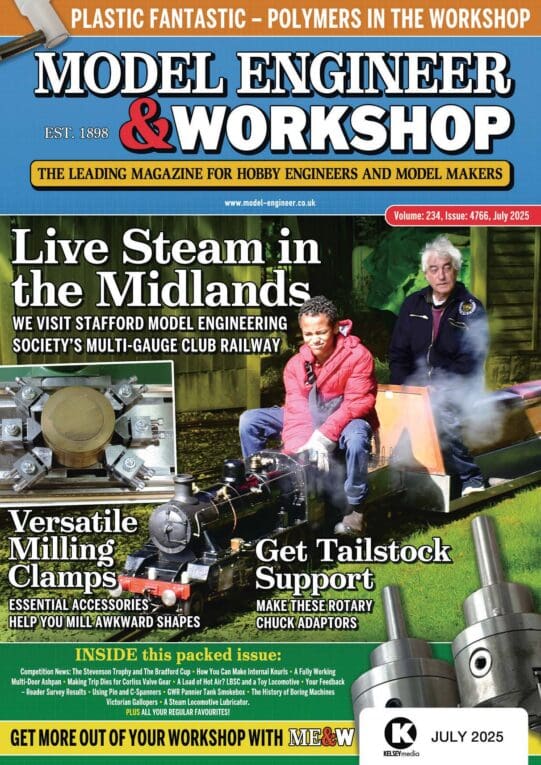Lezsmith and all, just to clarify the following statement in your post:-
“an appropriate safety value MUST be added to account for operational conditions the boiler will encounter, rather than an arbitrary 8x used in the current UTS method.”
I just want to reiterate and emphasise once again that the so-called safety factors in the UTS method are not Safety Factors at all.
…
To refer to the UTS ‘safety factors’ as actual Safety Factors is misleading and could lead copper boiler builders into thinking that they have a large safety factor (e.g. 8) in their boiler when in fact they do not, due to the reduction in strength of copper during the silver soldering process.
…A better choice of words would be:-
They can best be considered as Compensating Factors, used to compensate for the fact that the strength properties of the material used in the UTS calculation (hard drawn copper) is much reduced to the properties of the material when a boiler has been silver soldered, ie annealed copper. (Approximately by 1/6 depending upon the source of information for the properties of the materials.)
I fear inventing ‘Compensation factor’ as an alternative to ‘Safety Factor’ only muddies the water!
Though there are variations Safety Factor is long established in engineering, see Wikipedia’s ‘Factor of Safety‘ In my view, this whole debate is about understanding Safety Factor.
Simply put, the underlying YP and UTS formula were derived scientifically. At root, the burst pressure of a cylinder depends on the outside diameter, how thick the wall is, and the strength of the material. Easy enough on paper, unfortunately the real world is complicated! Especially “strength of material”.
Material strength can be expressed imperfectly with Yield Point or Ultimate Tensile Strength. Both can be measured and used to give reasonable answers in calculations, but material strength is best explained with a graph. More! The formula assume a perfect cylinder and ignore all the external factors, which matter. For example, material strength varies with temperature, construction matters (joints, end-caps and penetrations), and so do the operating conditions. Metal fatigue!
In practice, the underlying formula is used to derive the minimum thickness of a pressurised cylinder, and then an arbitrary safety factor is applied. How big is the safety factor? My machine design book says: ‘To compensate for the fact that not all the assumptions involved in a rational analysis are true, the machine designer must choose a safety factor which in his judgement will permit satisfactory machine operation.’
Safety Factors are usually a multiplier decided in light of practical experience, often radically increasing strength above formula! SF’s are often embedded in codes of practice, likely updated after a catastrophic collapse.
I pointed out in post #800663 that the Safety Factors in the YP and UTS formula dominate the answer. In my view the difference between YP and UTS is academic in this application because both are heavily weighted by the Safety Factor and produce similar results. Not worth arguing about.
Unfortunately, the size of boiler Safety Factors are lost in the mists of time! But they are based on practical experience – boilers built to them giving a good service life without going bang. Practical experience increases the Safety Factor to cover unknowns like material differences. The strength of Copper depends on which alloy is used, how it was worked during the build process, and then on how hard, hot, and often the boiler is cycled. Safety Factors are not an exact science.
Worth challenging current standards because they’re excessively high compared with a good design built by a skilled worker using well-chosen material. But they cover weak designs, built by semi-skilled workers from scrap!
I suggest YP versus UTS isn’t the most important factor. Both formula only apply to the cylinder and assume it has perfect ends, which is unreal. Actual boilers have a smoke-box, tubes, holes punched in the shell for drainage, safety valves & the regulator, and a firebox full of stays. MEInThailand recognises the problem, noting silvering soldering can reduce strength by up to 1/6. Multiplying by a SF fixes that, but the SF is arbitrary…
My gut feel is that FEM offers a better way of challenging the status quo. The whole boiler can be modelled, not just the cylinder, the software calculates stresses throughout the whole structure, and shows where they concentrate. Not a trivial job though.
I welcome articles like this and the resulting discussion.
Dave
Nigel Graham 2.




